Search the Special Collections and Archives Portal
Search Results

Aerial photograph of Hoover Dam, circa 1935
Date
Archival Collection
Description
Image
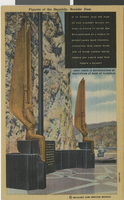
Figures of the Republic, Boulder Dam: postcard
Date
Archival Collection
Description
Mixed Content
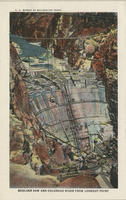
Postcard of Hoover Dam, 1931
Date
Archival Collection
Description
Image
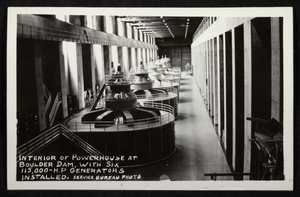
Postcard of powerhouse at Hoover Dam, circa 1935-1940
Date
Archival Collection
Description
Image
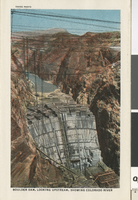
Postcard of Hoover Dam, 1931
Date
Archival Collection
Description
Image
Newspaper clippings about Boulder City business and city advertisement, Boulder Dam (Hoover Dam) construction, and political cartoons, 1891-1968
Level of Description
Archival Collection
Collection Name: UNLV University Libraries Collection of Posters
Box/Folder: Flat File 20
Archival Component
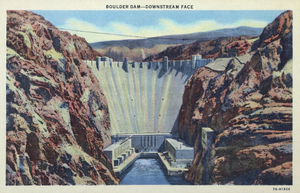
Postcard of Hoover Dam's downstream face, circa mid 1930s
Date
Archival Collection
Description
Image

Postcard of Hoover Dam spillway, circa 1935-1936
Date
Archival Collection
Description
Image
UNLV University Libraries Collection on Hoover Dam
Identifier
Abstract
The UNLV University Libraries Collection on Hoover Dam dates from 1935 to 1937 and consists of black-and-white photographs of the construction of Hoover Dam in Nevada. The collection is an artifical collection created by UNLV Special Collections and Archives staff. The photographs document early construction of the Hoover Dam to images of the dam at completion. The collection also contains photographs of construction workers.
Archival Collection
Hoover Dam, 1930-1965
Level of Description
Scope and Contents
Materials contain photographs of the Hoover Dam and surrounding areas from 1930 to 1965. The Hoover Dam, also known as the Boulder Dam, was constructed on the Colorado River in Black Canyon near Las Vegas, Nevada from 1931 to 1936 during the Great Depression. The dam impounds Lake Mead, the country's largest reservoir, and it provides hydroelectric power to Nevada, Arizona, and California.
Materials also include photographs of the Pueblo Grande de Nevada archaeological sites, also known as the "Lost City," which were partially covered by the waters of Lake Mead. The area originally belonged to Puebloan peoples. Additionally, the materials contain photographs of the town of St. Thomas, which was also submerged beneath Lake Mead.
Archival Collection
Collection Name: Elbert Edwards Photograph Collection
Box/Folder: N/A
Archival Component
